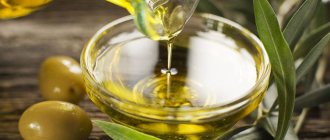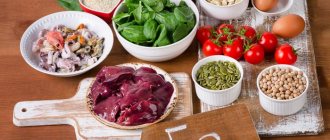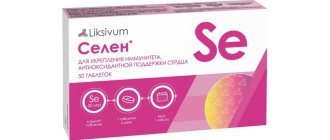Along with vegetables and fruits, nuts are an important part of our diet. They have a remarkable biochemical composition, as they contain a wide range of microelements and vitamins, as well as fats and proteins. The beneficial properties of this product are very numerous: it has a beneficial effect on cognitive activity, increases the body's resistance, maintains healthy hair and skin, strengthens bone tissue and tooth enamel, and also increases hemoglobin levels.
However, among all the variety of nuts, some can be considered the absolute favorites of nutritionists. So, which nuts are the healthiest?
Peanut
This is one of the leaders in magnesium content. As a result, by adding it to your diet, you will reduce the risk of developing cardiovascular diseases, including the likelihood of strokes and heart attacks. In addition, peanuts have a mild choleretic effect. It is also useful for representatives of the stronger sex, as it increases male strength. At the same time, it should be taken into account that peanuts are contraindicated for arthrosis, arthritis and gout. Also, people prone to high blood pressure should approach the use of this product with caution. The daily requirement of peanuts is from fifteen to twenty kernels.
As tasty as it is healthy – hazelnuts
This nut is a good source of folic acid (more than all other nuts), which is essential for children and pregnant women to create and maintain the development of new cells. Hazelnuts also help provide the body with healthy fats (monounsaturated fatty acids), calcium, iron, magnesium, copper, manganese, thiamine, vitamin B6, the antioxidant alpha tocopherol, lutein and zeaxanthin. Lutein and zeaxanthin are carotenoids that improve immunity and are especially good at protecting vision.
Brazilian nut
One of its main advantages is that it gives you a feeling of fullness very quickly. It is enough to eat just a few kernels to dull the feeling of hunger. In addition, Brazil nuts normalize the functioning of the pancreas and blood glucose levels, and are also useful for the prevention of cancer. It should not be forgotten that Brazil nuts are allergens, and in addition they have the property of accumulating radioactive substances. Nutritionists recommend eating two to three kernels per day.
What benefits will pistachios bring to the body?
Last on our list, but not in terms of health benefits, pistachio nuts contain almost everything you need: healthy fats, fiber, calcium, iron, magnesium, phosphorus, potassium, copper, manganese, thiamine, folic acid, choline and vitamin B6.
What you should pay special attention to is the high level of vitamin A in pistachios, which is practically not found in other nuts or is found in small quantities. Vitamin A is very important for antioxidant protection of the body and vision. The benefits of pistachio nuts for these purposes are emphasized by the content of the antioxidant gamma tocopherol, the above-mentioned lutein and zeaxanthin, as well as the natural immunostimulant beta-carotene. It’s worth treating yourself to unsalted pistachios more often!
Walnut
This nut is the most popular and affordable, at the same time considered the most useful. Those suffering from anemia, neuralgia, and vitamin deficiency should add walnuts to their diet. In addition, some studies indicate that this product reduces the risk of developing malignant neoplasms. It should be excluded from the diet in case of intestinal disorders, peptic ulcers, as well as a tendency to gain excess weight. You can eat no more than five nuts per day.
How many nuts should you eat without harming yourself?
Nuts cannot be divided into harmful and healthy. All of them can make your body healthier if you eat the fruits every day in reasonable quantities. Exactly the same way it can cause harm - with excessive consumption.
Svetlana:
The protective effect of nuts occurs if you consume
20 grams
(
about 18 almonds - editor's note
) per day. It does not interfere with your figure and does not cause heaviness in the stomach. And increasing their quantity in the diet does not entail anything positive. This applies to eating all types of nuts, and not just any one in particular.
Pine nuts
These little nuts are a real storehouse of antioxidants. They perfectly increase the body's resistance and are also very well absorbed. Because of this, nutritionists recommend adding them to the diet of children and expectant mothers. They are also recommended for emotional disorders, hair and skin problems. People suffering from insomnia are recommended to eat several aromatic kernels before bed. However, this product is not recommended for cholelithiasis and cholecystitis. It is recommended to eat about two tablespoons of nuts per day.
Contraindications to the use of Omega-6
Like any other active substance, Omega-6 has contraindications for use. If you have diseases such as psoriasis, eczema, or diabetes, be sure to consult your doctor before taking Omega-6 supplements.
Omega-6, capsules
Additionally, Omega-6 intake should be limited (but not completely prohibited) during pregnancy, so if you are expecting or preparing to conceive, discuss your diet and vitamin intake with your gynecologist.
Expert opinion
Excessive consumption of foods rich in Omega-6 polyunsaturated fatty acids during gestation can lead to disruption of cytokine production, increased levels of prostaglandins, and decreased levels of high-density lipoproteins. All this can negatively affect the course of pregnancy.
Obstetrician-gynecologist of the highest category Oksana Anatolyevna Gartleb
Cashew
One of the main advantages of these nuts is their low allergenicity. In addition, they help strengthen the body's defenses, normalize heart rate, and improve the quality of tooth enamel. Nutritionists recommend including these nuts in the diet of people suffering from asthma, hypertension and diabetes. It should be borne in mind that cashews contain plant oxalates, which, when combined with calcium, can increase the risk of kidney stones. The daily consumption rate is ten to fifteen pieces.
Pros and cons of nuts
As mentioned, nuts can be a great snack. They do not spoil for a long time, do not require special storage conditions, and for them it is enough to simply determine the daily consumption rate. However, such a wonderful, at first glance, product has several contraindications. For example, they should not be consumed by small children - these root vegetables are very difficult to digest. Also, they should not be eaten in the evening - for the same reason. It is safe for children to consume these nuts from the age of eight to nine years. You should start with a few nuts a day, gradually increasing the amount.
Carefully! According to recent studies, the consumption of any nuts by pregnant women seriously increases the risk of having a child prone to asthma or other diseases associated with vascular disease or lung disease.
Fresh fruits are most beneficial for digestion. Overcooked fruits are harmful to the liver, and dried or soft fruits can lead to irreversible changes in the human body.
Don't forget about the lethal dose of consumption. Bitter almonds contain hydrocyanic acid, a substance that can be fatal when consumed. For an adult, fifty nuts will be the last delicacy in life; for a child, the same outcome will occur after ten pieces.
Despite the disadvantages described above, nuts are very healthy. They stimulate brain function, are natural energy drinks and contain a lot of useful vitamins and microelements. There are many tables of vitamin content in nuts
, they prove the fact of the product’s benefits.
Almond
This nut is the leader in fiber and protein content. This nut is also useful for the prevention of diseases of the cardiovascular system, relieves muscle cramps and helps normalize blood sugar levels. At the same time, almonds are contraindicated if you are prone to tachycardia, are not recommended for diseases of the gastrointestinal tract, and can also provoke an individual intolerance reaction. Nutritionists recommend eating 15-20 almond kernels per day.
Content of nutrients in nuts
If we talk about the benefits of the fruits in question, it is difficult to draw clear conclusions. Each type of nut can have very different micronutrients that are beneficial for some and harmful for others. But, with some generalization, we can make the following list of the usefulness of these varieties:
- Brazilian nut. Very high-calorie, but at the same time rich in protein fruits. Not recommended for obese people. Contains a lot of vitamins B, C and E, fatty acids and a huge amount of minerals that are beneficial to health;
- peanuts and almonds. Peanuts are one of the record holders for protein content and are often recommended for athletes, and almonds have a huge amount of vitamin B2. Also, both types of root vegetables boast huge reserves of vitamin E;
- pine nuts, cashews and hazelnuts. All of them are rare species and cost a lot, but they have an impressive supply of vitamin E and are low in calories;
- Walnut. It is not without reason that they say that its fruit is similar to a brain - this baby is indispensable for those who work with large amounts of information, but you should not get carried away with it - the daily norm for an adult is about three to four nuts;
- Although few people perceive chestnuts as food, they are a very tasty delicacy. Moreover, steamed chestnuts are considered one of the most delicious low-calorie foods. They also have a lot of vitamins A, B and C;
- pistachios. Very high in calories, but healthy. They are considered natural “rejuvenating apples” due to their high vitamin E content.
Popular questions
Tell me, what oil is included in Ginocomfort evening primrose oil?
Unrefined or..? Hello! The composition includes an extract from evening primrose seeds, rich in essential fatty acids and amino acids.
Hello. How long can I use evening primrose oil during menopause (when I don’t use it, the symptoms return)? Is it safe for oncology? Thank you.
Hello! A course of 3 months is considered rational. Can be combined with Gynocomfort climafemin. The drug is safe for cancer.
Is evening primrose oil suitable for a 17 year old girl?
Hello! This drug can be used during adolescence.
Hello! I have copious white discharge, my labia are sore and unpleasant during sex. I can see a gynecologist only in a week. Please advise what to do now? Thank you in advance.
Hello!
At this stage, I recommend using Ginocomfort gel with tea tree oil, 1 dose once a day for 7-10 days. The composition of the gel will have an anti-inflammatory, anti-edematous effect, eliminate itching and soreness. For an accurate diagnosis, contact a specialist
Omega-6 from evening primrose oil, video
is not responsible for the accuracy of the information presented in this video clip.
Source – Fitness Pro Sources:
- NON-DRUG METHODS FOR CORRECTING PREMENSTRUAL MOOD DISORDERS: LITERATURE REVIEW. Zhilyaeva T.V. // Difficult patient. – 2021. – No. 2-3. – P. 5-9.
- PREMENSTRUAL SYNDROME: FROM THEORY TO PRACTICE. Yakushevskaya O. V. // Medical Council. – 2021. – No. 12. – pp. 146-149.
- PHYSIOLOGICAL ASPECTS OF THE USE OF FATS IN NUTRITION. Subbotina M. A. // Equipment and technology of food production. – 2009. // https://cyberleninka.ru/article/v/fiziologicheskie-aspekty-ispolzovaniya-zhirov-v-pitanii
- FATS - FOR THE MIND AND HEART. Gladyshev M.I. // Science at first hand. – 2012. – P. 33-45.
- Essential fatty acids: natural sources, metabolism, physiological functions and health implications. Bukin Yu.V. // M. - 1999. - P. 140.
- On the biological properties of vegetable oils containing linolenic acid. Yazeva L.I., Filippova G.I., Fedina N.I. // Nutrition issues. (18:3 ω-3). – 1989. – No. 3. – P. 45-50.
- Polyunsaturated fatty acids are an essential component of nutrition. HELL. Poverin // Storage and processing of agricultural raw materials. - 2008. - No. 7. - pp. 35-38.
How to choose nuts when buying
Today, on the shelves of supermarkets and grocery stores, nuts can be found in a variety of forms, and in many varieties - to suit every taste and request. For example, walnuts are round in thick shell and oval in thin shell.
Types in which walnuts are found on sale.
- shell;
- clean kernels without shells and not crushed;
- clean nut kernels without shell, crushed;
- walnut kernels mixed with other additional ingredients (chocolate covered, glazed, with sweet honey syrup).
Regardless of the type in which it is sold, the walnut should be assessed visually and its aroma should be felt. It should look clean and fresh.
- If the kernels smell of mold, then you should absolutely not buy them.
- If, upon visual inspection, doubts arise about the quality of the nut, even if the flaw is completely insignificant, then you should also refuse to purchase them.
Nuances of choosing walnuts for eating
- There should be no defects on the surface of the shell (mouldy whitish deposits, stains, dents and other types of physical damage), as well as oiliness;
- There should be no moisture during storage. The shells should be dry to the touch. Otherwise, the kernel may rot or its taste will become very unpleasant.
- Knock randomly selected nuts against each other and listen to the sound they make. If the sound is clear and clear, then everything is fine and you should buy these nuts. If the sound is dull, then the nut kernels are spoiled.
- the surface of the walnut kernel should not be oily (oil is released only when stored incorrectly or for too long);
- Having tasted the peeled kernel, its taste should not be bitter, and the aroma should be characteristic only of a walnut. Any other tastes and smells cannot be acceptable.
- Shake the nut chosen “at random” a little. If there is any sound, then its core is already damaged or dried out.
- When choosing in what form to buy walnuts - in shell or not - preference should be given to the first option.
Where is Omega-6 found and how to take it correctly?
Omega-6 acids are quite common in foods: they can be found in meat, fish and seafood, various oils and vegetables. However, getting enough of these polyunsaturated fatty acids through diet alone is not so easy. In this case, you need to add a voluminous amount of fat to the diet, which is not suitable for every woman, both in terms of food preferences and from the point of view of a healthy diet and calorie intake limit. Omega-6 is found in large quantities in fatty foods such as mayonnaise sauces, chips and fried pork - of course, your body is unlikely to get healthier on such a diet.
Omega-6 capsules
The optimal solution in this situation is to take special complexes of nutritional supplements containing Omega-6, for example, GINOCOMFORT EVENING PRIMMULA OIL. The drug should be taken 2 capsules twice a day with meals. If necessary, the course can be repeated 3-4 times during the year.
Evening primrose oil contains a high concentration of unique and essential gamma-linolenic acid, which belongs to the Omega-6 group.
Thanks to gamma-linolenic acid, evening primrose oil helps:
- Reducing discomfort during PMS and during menstruation;
- Normalization of the menstrual cycle;
- Improving skin elasticity;
- Strengthening hair and nails.
Below is a table of Omega-6 content in foods.
Products containing omega-6
Essential Omega-6 Foods
| Vegetable oils | Omega-6, per 100 g | ||
| Linseed oil | 17 | ||
| Corn oil | 53,5 | ||
| Avocado oil | 12,5 | ||
| Olive oil | 9,7 | ||
| Palm oil | 9,1 | ||
| Sunflower oil | 40 | ||
| Grape seed oil | 69,5 | ||
| Fish and seafood | Omega-6, per 100 g | ||
| Caviar red, black | 0,08 | ||
| Mackerel | 0,11-0,22 | ||
| Salmon | 0,12-0,17 | ||
| Herring | 0,13-0,19 | ||
| Whitefish | 0,27 | ||
| Wild coho salmon | 0,2 | ||
| Tuna | 0,01-0,053 | ||
| Trout | 0,07-0,17 | ||
| Pink salmon | 0,09 | ||
| Mussels | 0,02 | ||
| Squid | 0,002 | ||
| Sturgeon | 0,07 | ||
| Oysters | 0,046 | ||
| Flounder | 0,05 | ||
| Sea bass | 0,01 | ||
| Halibut | 0,03 | ||
| Cod | 0,005-0,018 | ||
| Lobster | 0,04 | ||
| tilapia | 0,16 | ||
| Cancers | 0,05 | ||
| Scallop | 0,01 | ||
| Shrimps | 0,038 | ||
| Seeds and nuts | Omega-6, per 100 g | ||
| Flax seed | 5,9 | ||
| Chia seeds | 5,8 | ||
| Hemp seeds | 28,9 | ||
| Walnuts | 33,76 | ||
| Pecan | 20,6 | ||
| Pistachios | 13,48 | ||
| Sesame | 25,2 | ||
| Macadamia nuts | 1,3 | ||
| Pumpkin seeds | 20,7 | ||
| Pine nuts | 0,456 | ||
| Hazelnut | 7,83 | ||
| Cashew nuts | 7,78 | ||
| Quinoa raw | 2,98 | ||
| Amaranth | 2,7 | ||
| Sunflower seeds | 23 | ||
| Brazilian nut | 23,9 | ||
| Quinoa cooked | 0,97 | ||
| Almond | 12,3 | ||
| Peanut | 15,5 | ||
| Coconut, pulp | 0,36 | ||
| Vegetables and greens | Omega-6, per 100 g | ||
| Dried mint | 0,44 | ||
| Thyme | 0,085 | ||
| Rosemary | 0,44 | ||
| Mint | 0,054 | ||
| Basil | 0,073 | ||
| Fresh spinach | 0,026 | ||
| Avocado | 0,015 | ||
| Brussels sprouts | 0,045 | ||
| Leek (stem) | 0,07 | ||
| Green salad | 0,024 | ||
| Cabbage | 0,015-0,04 | ||
| Ginger | 0,12 | ||
| Broccoli | 0,017 | ||
| Green onion | 0,04 | ||
| Garlic | 0,23 | ||
| Cauliflower | 0,016 | ||
| Dill | 0,08 | ||
| Eggplant | 0,063 | ||
| Parsley | 0,115 | ||
| Cucumber | 0,028 | ||
| Raw wakame seaweed | 0,01 | ||
| Laminaria (seaweed) raw | 0,02 | ||
| Dried spirulina | 1,25 | ||
| High Protein Foods | Omega-6, per 100 g | ||
| Soybeans | 9,9 | ||
| Beef fat | 1,49 | ||
| Duck fat | 12,0 | ||
| Mutton | 1,24 | ||
| Whole milk mozzarella cheese | 0,39 | ||
| Butter 80% | 24,3 | ||
| Pork | 3,3 | ||
| Beans | 0,18 | ||
| Chees Feta | 0,32 | ||
| Rabbit | 0,86 | ||
| Tofu | 1,6-1,8 | ||
| Raw chicken egg yolk | 3,5 | ||
| Lentils | 0,41 | ||
| Raw chicken egg | 1,6 | ||
| Blackberry | 0,18 | ||
| Peas | 0,41 | ||
| Turkey with skin | 1,1 | ||
| Whole milk 3.2% | 0,12 | ||
| Broiler chicken with skin | 2,9 | ||
| Hard boiled egg | 1.2 | ||
| Beef | 0,62 | ||








